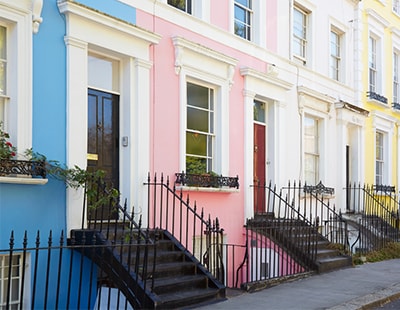The proportion of homes sold in London was lower than any other part of England and Wales last year according to a new analysis by Knight Frank.
The agency, which has analysed Land Registry reports, says just 3.2 per cent of all private London residential properties were sold in 2017, well below the average of 4.1 per cent for England and Wales.
The London figure marked a decline from 3.6 per cent in 2016 while the average for England and Wales was also down, albeit less starkly, from 4.3 per cent the previous year.
Affordability is at the root of the problem, says the agency.
With the exception of 2009, liquidity in the London market equalled or exceeded the England and Wales average between 2001 and 2014. However, it has been lower by comparison since then.
“Average prices in London were 59 per cent above the pre-financial crisis peak in February 2018 which compares to 18 per cent in the West Midlands and 6.5 per cent below in north-east England” says Tom Bill, head of London Residential Research at Knight Frank.
“The clear message is that relatively high house prices in the capital are a contributory factor to the slower rate of sales.”
Property market liquidity was highest in Wales, where 4.8 per cent of all properties sold in 2017.
Other areas with relatively strong figures included south-east England (4.2 per cent), north-west England (4.2 per cent), the south west (4.4 per cent) and the West Midlands (4.1 per cent).
But the agency concentrates its concern on London, where an analysis of boroughs compared market liquidity in 2017 to the long-run average since 2001 - and the results underline how higher rates of stamp duty have acted as an additional drag on activity.
No single borough saw liquidity levels in 2017 exceed its 17-year average and it was noticeable that some of the largest declines were in boroughs that typically contain higher-value properties.
The 10 boroughs that recorded the largest declines in 2017 compared to the long-run average were all in inner London - Camden, Hammersmith & Fulham, Islington, Kensington & Chelsea, Lambeth, Lewisham, Southwark, Tower Hamlets, Wandsworth, and Westminster.
Meanwhile the most resilient borough was Havering, which was only 0.3 per cent below its long-run average in 2017.
The long-run average rate of liquidity for the whole of London is 4.7 per cent, which was 1.5 percentage points above the figure of 3.2 per cent recorded in 2017, which was the widest gap of any region.
The highest ratio recorded for London was 7.2 per cent back in 2002. Southwark has historically had the most liquid property market, peaking at 10.2 per cent in 2001.
“Higher rates of stamp duty have clearly also played their part in curbing transactions in the capital” says Bill. “Add a dose of political uncertainty into the mix and the result is a residential property market that is being kept in check to some extent, despite low interest rates and high levels of employment.”
























Join the conversation
Jump to latest comment and add your reply
Lies damned lies and statistics - ''The proportion of homes sold''
I much prefer how many properties were sold in a period, compared to the same period previously - that comes with it's issues I know - but ''the proportion'' will go down where there is extra supply! There has been/is a building boom in London delivering moire homes - perhaps not enough but nonetheless.
More (homes) means Less ''proportionately''
Hi Rob + anyone else interested. If you did want the absolute sales numbers they are freely available through the ONS on their website.
It would help if links to that data and the Knight Frank report were more routinely included in these articles so we could review and come up to our own conclusions.
Please login to comment